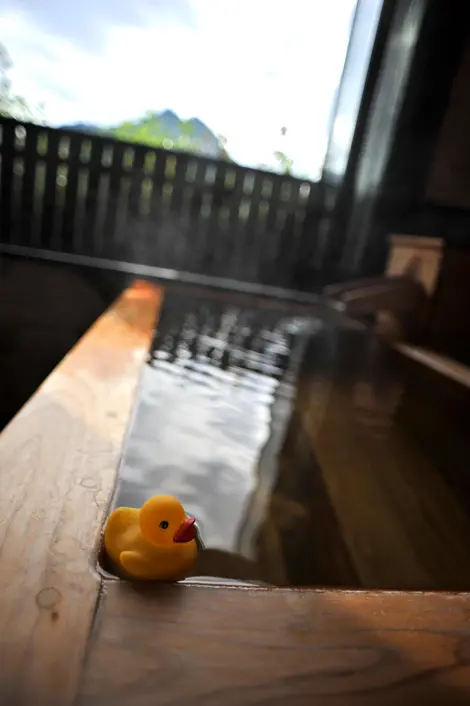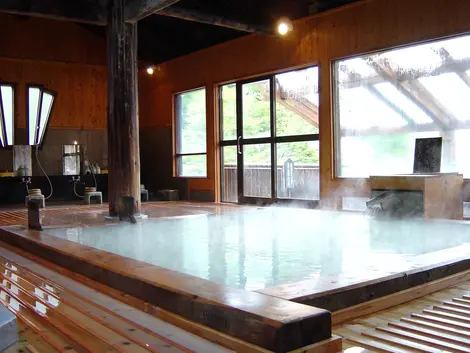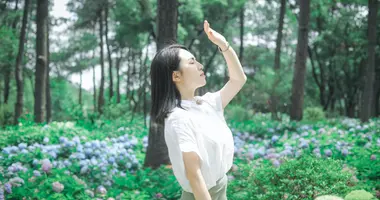Ofuro: the traditional Japanese bath for health and well-being
- Published on : 24/05/2024
- by : Antoine Legastelois
- Youtube
Ofuro, also known as furo or Japanese bath, is an ancestral ritual of Japanese culture. Much more than a simple bath, it's a moment of relaxation and well-being with numerous health benefits. Find out all you need to know about this fascinating tradition, from its origins to how to practice it at home.
What is an ofuro and where does this tradition come from?
The term "ofuro" refers to the traditional Japanese wooden bathtub, usually made of hinoki (Japanese cypress) or sugi (Japanese cedar). Deep and compact, it's shoulder-deep when seated. The particularity of the ofuro lies in its use, which differs from the Western bath: in Japan, the bath is not intended for washing, but for relaxation in very hot water (up to 45°C).
The practice of bathing has been anchored in Japanese culture for centuries. Associated with Shintoism, it represents a ritual of purification for body and mind. In the past, natural hot springs (onsen) and public baths (sentô) enabled the population to enjoy the benefits of ofuro on a daily basis. Today, most households have their own Japanese bathtub.
How does the Japanese bathing ritual unfold?
The use of the ofuro follows very precise codes. The golden rule: you wash thoroughly before entering the bath, so as not to contaminate the water, which will be reused by the whole family. To do this, you sit on a small stool and wash yourself thoroughly, then rinse off with a shower or a basin.
Once clean, you can immerse yourself in the ofuro filled with scalding water. You sit there, legs bent, for around 10 to 15 minutes. Covered with a lid between each use, the hot water is shared successively by all members of the household. Some even use it the next day to run the washing machine!
What are the health and well-being benefits of the ofuro?
The intense heat of the ofuro has many benefits. First and foremost, it provides deep muscular relaxation and reduces stress. Neck-deep immersion stimulates blood and lymph circulation, tones the heart and regulates blood pressure. Active perspiration eliminates toxins and impurities, leaving skin clean and smooth.
On an emotional and mental level, the Japanese bath promotes relaxation and letting go. This moment of intimacy and calm establishes a meditative state conducive to calming the mind. A benefit enhanced by the essential oils or bath salts sometimes added to the water. Finally, taking an ofuro in the evening improves sleep quality by warming the body before bedtime.
What are the different types of ofuro?
While the ofuro refers to the family bathtub, the Japanese bathing ritual takes many different forms:
- Onsen: natural thermal water baths nestled in seaside resorts or traditional inns (ryokan). Their mineral-rich volcanic waters are renowned for their therapeutic virtues.
- Sentô: urban public baths where people bathe naked, in large communal rooms separated for men and women. They play an important social role.
- Roten-buro: outdoor baths in the heart of nature, overlooking gardens, mountains or the ocean. An opportunity to combine the pleasures of bathing with those of contemplation.
How to integrate an ofuro at home?
To recreate the ofuro experience at home, several solutions exist. Purists will opt for an authentic round wooden bathtub, to be installed in a large bathroom or on a terrace. Modern wooden bathtubs offer a good compromise between traditional aesthetics and high-tech functionality.
Alternatively, a simple rectangular bathtub can be transformed into an ofuro with a few modifications. Place a small stool and a showerhead nearby for soaping up beforehand. Fill the tub with water at over 40°C, and add Japanese-scented salts or oils. Then soak for ten minutes in a seated position!
The ofuro in Japanese popular culture
Ubiquitous in Japan, the ofuro not only sets the pace for daily life, but is also a feature of popular culture. Numerous films and TV series feature the family ritual of bathing, such as Isao Takahata's My Neighbors the Yamadas and Hirokazu Kore-eda's Our Little Sister.
In Hayao Miyazaki's famous animated film My Neighbor Totoro, a memorable sequence shows the main characters, a father and his two young daughters, happily bathing in a small wooden ofuro. This scene is emblematic of the unifying role played by this ritual in Japanese families.
Where to experience an authentic Japanese bath on a trip to Japan?
Lovers of the Japanese bathing culture will not want to miss the chance to try out a real ofuro or onsen during a trip to the Land of the Rising Sun. Popular destinations include
- Beppu: nicknamed the "capital of onsen", this spa town on the island of Kyushu is home to the famous "hells", eight supernaturally-colored springs where the bubbling water reaches nearly 100°C.
- Hakone: easily accessible from Tokyo, this volcanic region abounds in ryokan with baths offering breathtaking views of Mount Fuji.
- Kurokawa onsen: this charming spa village lost in the mountains of Kumamoto is made up of small traditional inns along a river, some of which even offer open-air mixed baths!
A sacred ritual rooted in tradition, the ofuro is much more than a simple bath. A veritable art of living, it invites you to take care of your body and mind and rediscover harmony. An age-old wisdom that today inspires far beyond Japan's borders!



















